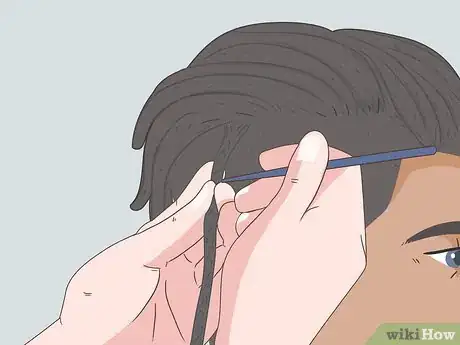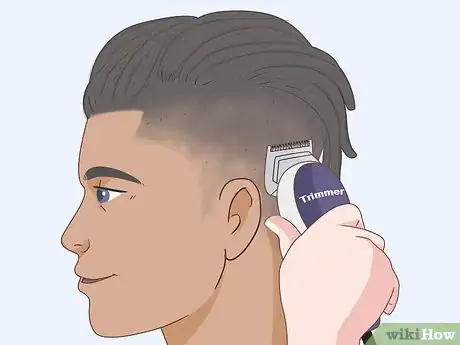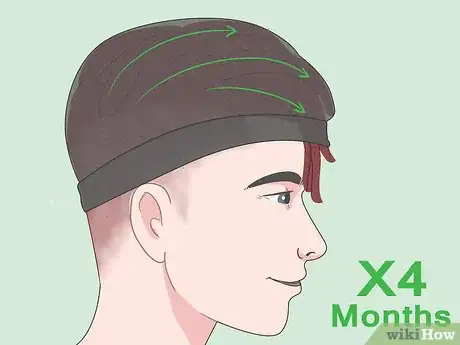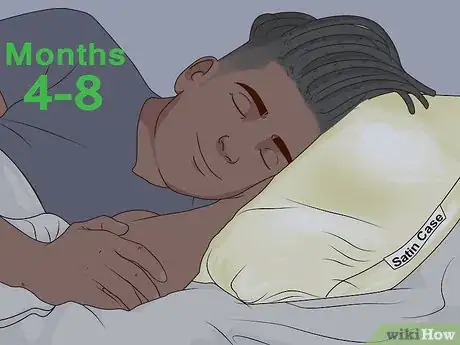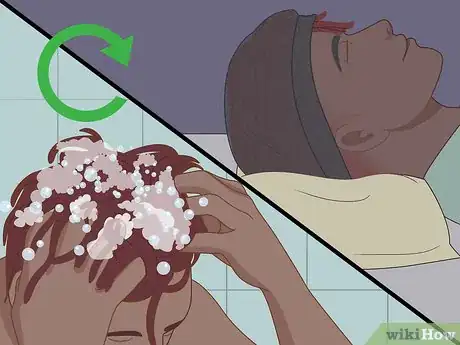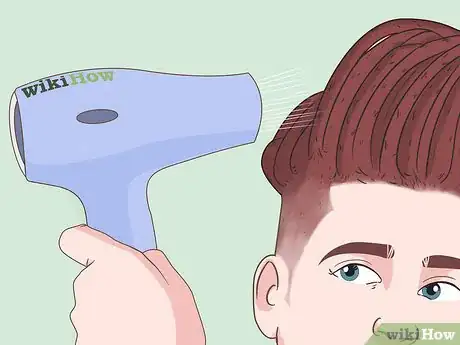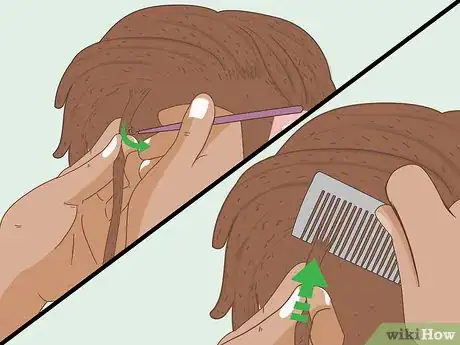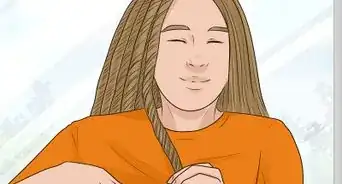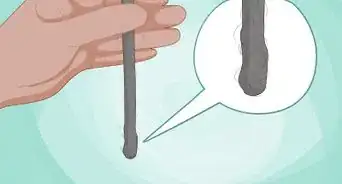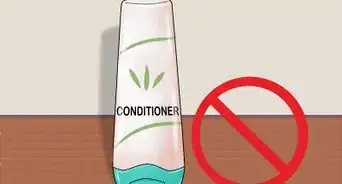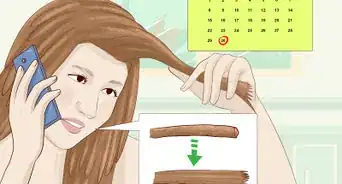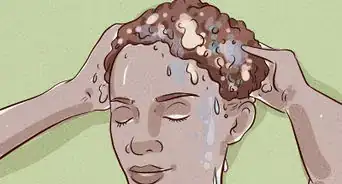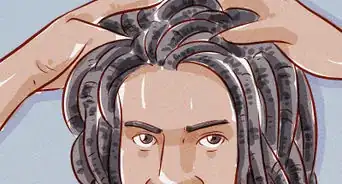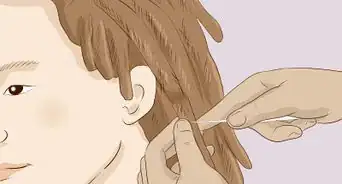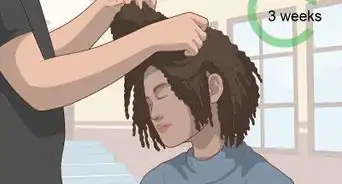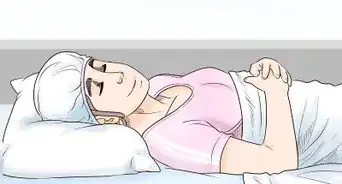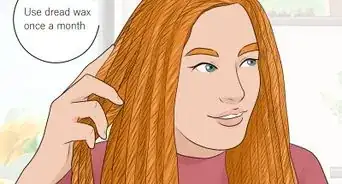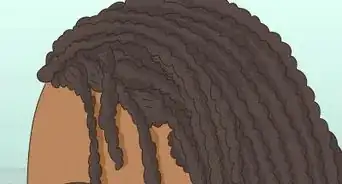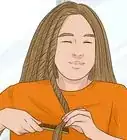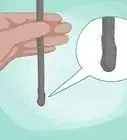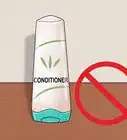This article was co-authored by wikiHow Staff. Our trained team of editors and researchers validate articles for accuracy and comprehensiveness. wikiHow's Content Management Team carefully monitors the work from our editorial staff to ensure that each article is backed by trusted research and meets our high quality standards.
There are 8 references cited in this article, which can be found at the bottom of the page.
This article has been viewed 37,278 times.
Learn more...
One of the most popular ways to style your dreads is by getting them to stand straight up. It takes a little bit of effort, but it can be done. For the first four months after you have your dreads, you’ll need to focus on training the direction of your hair. After the first four months, you can be a little more relaxed with your hair, as this is when your dreads will start to stand. Maintaining your dreads properly can help you keep your dreads for as long as possible.
Steps
Training the Direction of Your Dreads
-
1Get dreads put into your hair. How you create dreads in your hair will depend a lot of the texture of your hair, its thickness, and whether you’ve had dreads before. If you’ve never had dreads before, it’s best to go to ask someone – whether a stylist or a friend – to do them for you.
-
2Consider tapering the sides of your hair. Tapering the hair on the sides of your head can help train your dreads. Tapering means cutting the hair on either side of your head really short. With your hair shorter underneath the dreads, they'll start to grow out and up instead of just down.[1]Advertisement
-
3Wear a wave cap to bed for the first four months or so. When you get your dreads first done, they will usually lay back flat against your head. Instead of letting them stay this way, push them forward, so they lay in the opposite direction. Then wear a wave cap to bed to hold them in place.[2]
- If you find a wave cap uncomfortable, you can use a bandana to keep your dreads flat.
-
4Switch the direction of your dreads every night. If you notice that your dreads starting to lay too far forward, switch what direction you lay them in that night, and make sure they lay backwards. Repeat switching their direction until they stand up.[3]
Keeping the Shape
-
1Sleep on a satin pillow case between months four to eight. After about four months, you don’t need to wear a wave cap to bed anymore. You should sleep on a satin pillowcase, with your dreads above (instead of under) your head.[4]
-
2Wear a loc sock after eight months. These are available from most beauty supply stores or online retailers. A loc sock slides over your dreads and wraps around your forehead. It’s tight enough to keep your dreads standing up straight but won’t be uncomfortable.[5]
- You can wear the loc sock to bed to protect your dreads while you sleep.
- You can also wear the sock during the day to protect your dreads from any air pollution. Because you can't wash dreads the same way as loose hair, protecting them from pollution is especially important.
-
3Repeat the process every time you wash your hair. You should wash your dreads between once a week and once a month. When you do wash them, your dreads might end up falling flat against your head again. If this happens, go back to wearing a wave cap at night until they resume their shape. It shouldn't take as long as when you initially got your dreads.[6]
Maintaining Your Dreads
-
1Use residue-free soap to wash your dreads. Wash your dreads between once a week and once a month (how often you wash them will depend on your hair's natural makeup). A residue-free soap or shampoo gets to all of the hair strands, getting out any pollutants and leaving your hair clean and your style in tact.[7]
- You can find dread soap or shampoo at most beauty supply stores or online.
- You should wash your dreads whenever you notice your scalp or the roots of your dreads are becoming oily.
-
2Let your dreads dry completely. There's really no wrong way to dry your dreads, but you should let them dry completely. Squeeze as much excess water from your dreads as possible after you wash them. Then you can blow dry, air dry, or even use a microfiber towel to towel them dry.[8]
-
3Use aloe vera or apple cider vinegar to condition young dreads. Aloe vera will act as a natural conditioner and will also help your dreads lock. Apple cider vinegar relaxes the hair at the root and causes it to feel smoother. Pour some of your chosen product into your hand, and run it down your dreads.
-
4Use loc butter for more mature dreads. If your dreads are older than 6 months or so, you can use loc butter to condition your dreads. Lock butter is available at most beauty supply stores or online. Work the butter through your dreads from root to tip until they've all been treated.[9]
-
5Redo your dreads as you notice loose hair. As your hair grows out, you'll notice loose hair at the roots. To incorporate new growth, simply re-twist the hair at the root and then either use loc butter to hold the dread or a metal comb to back comb the hair.[10]
- How often you have to do this will depend on how quickly your hair grows and how you like your dreads to look. A good rule of thumb is to update your dreads every couple of days.
Community Q&A
-
QuestionI let my hair grow for year and I just got my hair dreaded, but only on the top. I would like them to stand up instead of falling to the side. What can I do?
 Community AnswerYou should cut it a little bit. When you are done with that, braid it into tight braids, let it grow, then take the braids out.
Community AnswerYou should cut it a little bit. When you are done with that, braid it into tight braids, let it grow, then take the braids out.
References
- ↑ https://theidleman.com/manual/mens-hair/popular-mens-dreadlock-hairstyles/
- ↑ https://www.youtube.com/watch?v=KBnoqVpxnX4&feature=youtu.be&t=57
- ↑ https://www.youtube.com/watch?v=KBnoqVpxnX4&feature=youtu.be&t=69
- ↑ https://www.youtube.com/watch?v=KBnoqVpxnX4&feature=youtu.be&t=93
- ↑ https://www.youtube.com/watch?v=KBnoqVpxnX4&feature=youtu.be&t=146
- ↑ https://www.youtube.com/watch?v=KBnoqVpxnX4&feature=youtu.be&t=243
- ↑ http://ragingrootsstudio.com/washing/#often
- ↑ http://ragingrootsstudio.com/washing/#often
- ↑ http://ragingrootsstudio.com/washing/#often
